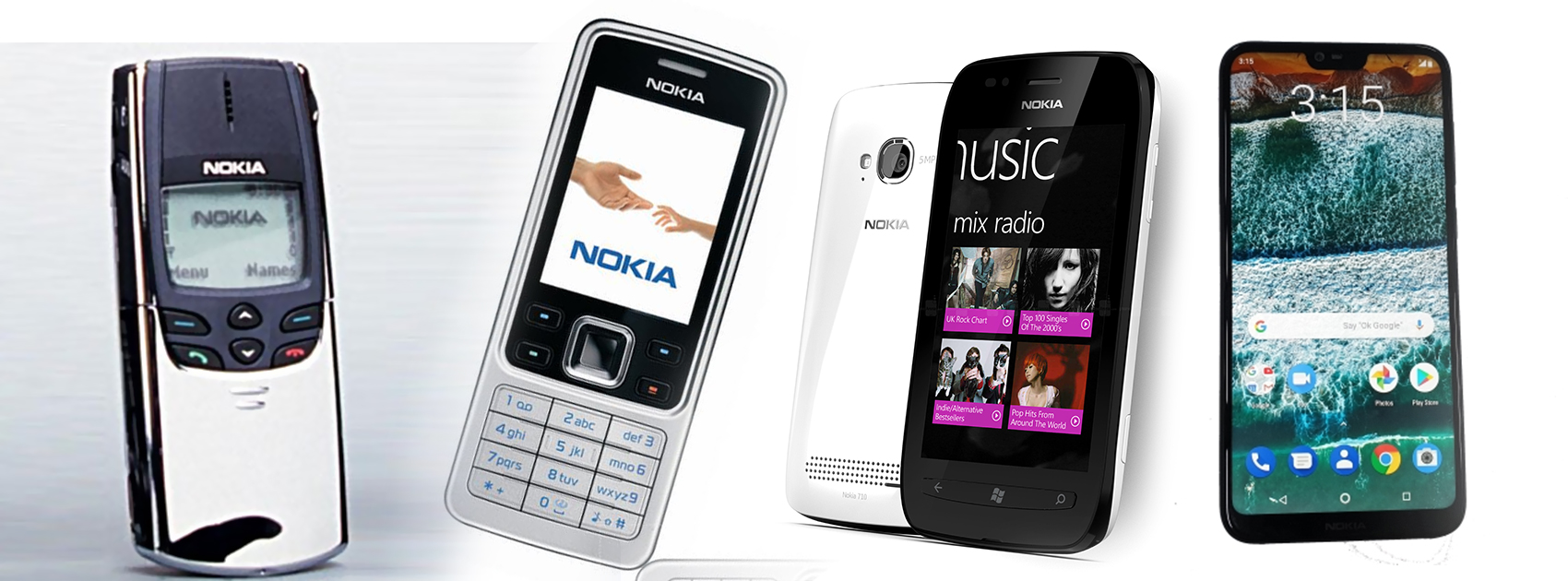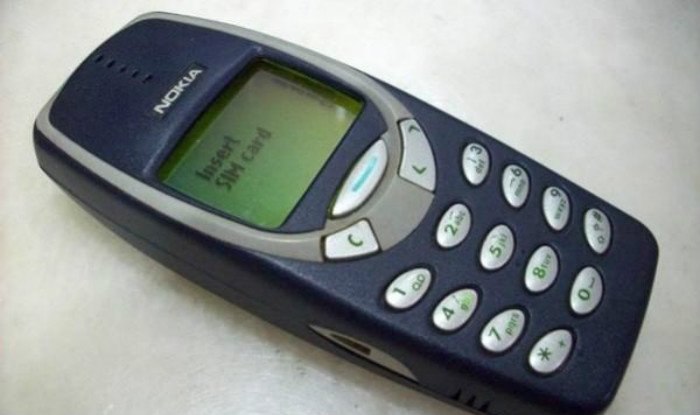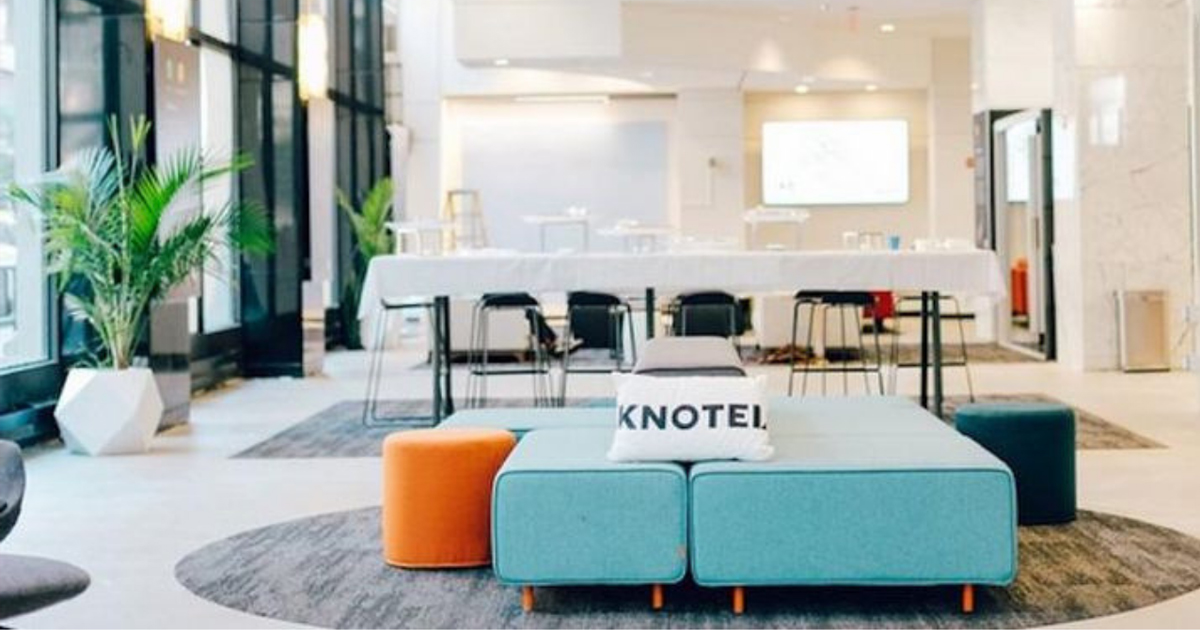Entrepreneur Stories
The Nokia Story
Published
5 years agoon

Nokia, a mobile manufacturing company with a Finnish origin, was at the top of its game. Their phones were affordable, made for people of all age groups and were easy to use. With so much going for them, it came as a major shocker to see the Company failing so miserably, Here’s taking a look at the rise and fall of Nokia, a company which started off not as an electronics and telecommunications company, but as a paper mill!
The beginning of Nokia
The beginning of Nokia can be traced back to the year 1865. Back then, this Finnish company was into paper making. The first paper mill was a massive success and by 1960, the Company branched out to electronics. From developing a special radio phone for the Army to creating a new range of electronics, Nokia grew steadily and quickly. Over the next few years, the Company kept adapting to change and by the dawn of the 20th century, Nokia started moving away from the pulp industry and created the first ever car phone! Nokia’s foray into the world of mobile phones started when Jorma Nieminen, fondly known as the Father of the Finnish Mobile Industry, decided to change the course of the company.
Jorma created the need of carrying phones outside their house, a thing which wasn’t considered feasible till the idea was presented. The first phone was manufactured at the meager cost of a 100 pounds and over the years, the Company kept adapting to a point where people slowly got convinced they needed a new version every few years.

Picture credits: nokiemesuem.info
The growth of Nokia in the world of phones
By the year 1979, Nokia entered a joint partnership with Salora (a leading Scandinavian colour TV manufacturer) to create a radio telephone company called Mobira Oy. Together with Salora, Nokia launched the first ever international cellular system called the Nordic Mobile Telephone network. Creating a link between Sweden, Denmark, Norway, and Finland, this network enabled international conversations and increased communication between people.
Through the years, Nokia acquired not only Salora, but other companies as well, giving the manufacturing company the edge it needed to push toward something bigger and better. The first ever mobile handset by Nokia, called Mobira Cityman 900, was brought to life in the early 1990s. Despite weighing over 800 grams and costing close to $ 5,456, this mobile phone sold like crazy!

Picture credits: carphonewarehouse.com
The change in Nokia’s strategy
Despite the massive success of the first handheld phone by Nokia, the company saw a lull in its profits. By the 1990s, the Nokia team realised the time had come to change the course of their plan by creating phones which blended with the times. In 1992, the first GSM Nokia phone, called Nokia 1011, was launched and immediately, the Company realised they had made it to the big leagues!
While the 1990s saw the rise of a new series of phones (the most popular one being the Nokia 6100,) the initially years of the next decade saw Nokia branch out into a new world. Making the most of the wireless technology boom at the time, Nokia won people all over the world by promising them an amazing experience. Perhaps the phone which propelled Nokia to the top was the Nokia 7650. Released in the year 2001, this was the first ever phone in the world with a built in camera!

Picture credits: Nokia.com
The gradual decline from fame
Within the first few years, Nokia’s profits started sky rocketing and the company kept expanding its services to a whole new place. At its heart, Nokia was always a hardware company and despite all its efforts to stay ahead of the game, it didn’t realise the growing effect the touchscreen phenomenon was having on the rest of the world! To add to the bag of ever growing troubles, faulty batteries made Nokia recall an entire shipment of phones, a move which resulted in a 30 % dip in sales!
Although the 90’s were Nokia’s rise to fame, the year 2007 saw a steep decline in Nokia’s profits. In 2009, the Company posted its first ever quarterly losses. With other companies like Apple and HTC upping their game in the face of competition, Nokia wasn’t sticking to the trends which were being followed by other people at the time.
By 2011, Nokia was struggling to make its presence felt in a market being taken over by other big wigs. The first partnership between Nokia and Microsoft saw the team give the world the Lumia series, a feeble attempt of overpowering the Android and the iOS trend. However, the Lumia series failed take make a mark.
With no other way out, Nokia decided the time had come to sell. In the year 2013, the hardware department of Nokia was acquired by Microsoft, a move which did not help Nokia regain its foothold in the market. Soon, Nokia faded into the background. However, post a very public take over by HMD Global, the Company is all set to make a grand come back in the world of smartphones!
Writer, dreamer and feminist. Smruti Kishore likes what she does and does what she likes. She's a passionate journalist obsessed with words and writing the world a better place.

You may like

The workplace has undergone massive changes in the last century. At the turn of the Industrial Revolution, any workplace was dominated by men while the women were delegated to run the homes. However, with the advent of the internet and new and exciting technologies, workplaces have undergone a tectonic shift. Women are no longer comfortable staying at home and are instead opting to lead teams and organisations. As every year passes, we get closer to true gender equality, women have proven time and again that they are equally capable to get the job done if not better in some instances. Names like Wolfe Herd (Bumble founder,) Kylie Jenner (Kylie Cosmetics founder,) Masaba Gupta (Masaba clothing label founder) are just some of the names who are known for leading world famous brands with their unique style of leadership.
As the world celebrates International Women’s Day, we bring to you five women founders who run world famous and successful startups.
1) Upasana Taku-MobiKwik
If you are an Indian and are used to doing online shopping, more often than not at the time of payment, you would be directed to a payment gateway. One of these gateways would normally be MobiKwik. The startup is a well known name in the digital payments and digital wallet space. MobiKwik was founded by Upasana Taku in 2009, who prior to founding MobiKwik used to work with PayPal. Today Upasana Taku is also in charge of bank partnerships, business operations, and talent acquisition at MobiKwik.
2) Richa Kar-Zivame
An enthusiastic MBA student, Richa Kar, developed an online lingerie shopping platform in the year 2011. Currently, Zivame is India’s leading online lingerie store with a valuation of more than $ 100 million. The brilliant idea for her own lingerie business came to light when Richa tracked Victoria’s Secret’s sales, who was one of her clients when she was working at SAP. She observed the lingerie sales figures reached peaks overseas but, Indian women were not provided with the similar innerwear. While Richa was studying the Indian lingerie market, she realized the social embarrassment in India surrounding lingerie shopping. Today Richa Kar could be credited with destigmatising the uneasiness surrounding lingerie shopping in India.
3) Falguna Nayar-Nykaa
After a long stint as an investment banker, Falguni Nayar founded Nykaa.com in the year 2013. An online one stop shop for beauty products from Indian and international brands, Nykaa changed the world of online shopping. Who would have ever thought buying makeup online would be so easy? Falguni Nayar proved many critics wrong and created a brand new place for people who love experimenting with styles, designs and colors.
ALSO READ: Zivame: Founding Story
4) Sabina Chopra-Yatra.com
Yatra.com is a popular Indian website for making flight and hotel bookings. Sabina Chopra was instrumental in identifying the potential for travel commerce in India and people moving towards cheaper or easier travel. By the time, people started looking to make bookings, Sabina made sure Yatra.com was already in place. Sabina was the former Head of India Operations of eBookers, which is also an online travel company based in Europe. Along with this, she was also working with Japan Airlines which further adds to her experience in the travel industry.
5) Rashmi Sinha-SlideShare
SlideShare allows people to upload and access their presentations online. While this feature is presently available everywhere, SlideShare was one of the first players in making this happen. Rashmi Sinha was one of the founders of the presentation sharing platform SlideShare. The company became so successful that in 2012, LinkedIn acquired the company for an amount of $100 million.
Let us know in the comments if you know any other wonderful women who have become leaders of their right or have started up and are doing extraordinary things. We at Startup Stories wish a wonderful Women’s Day to all the women in the world who are changemakers.
Articles
Why Are Ads On Digital Media Failing To Reach The Right Audience?
Published
3 years agoon
March 1, 2021
If you are a regular user of social media platforms and also a fan of consuming content on the digital medium, then there is a very high likelihood that you have seen ads on pages you are reading or watching something. There would be times when you have been targeted by an ad which feels like it was wrongly targeted at you. Imagine if you are a vegetarian by choice and while browsing online, if you are targeted by a food delivery app which shows ads about chicken dishes. The ad would only serve to spoil the mood of the online user instead of serving its actual purpose which is to push the user to buy a chicken dish.
These wrongly targeted ads might be the side effects of performance marketing or a weak brand marketing. Performance marketing means advertising programs where advertisers pay only when a specific action occurs. These actions can include a generated lead, a sale, a click, and more. Inshort, performance marketing is used to create highly targeted ads for a very specific target audience at a low cost. Performance marketing usually means high volume for a very specific cost.
Brand marketers on the other hand believe in narrowly defining target audiences but end up spending a lot of money on ad placements. Gautam Mehra, CEO, Dentsu Programmatic India & CDO, Dentsu International Asia Pacific said, “You’ve defined a persona, you know the emotions you want to elicit, but then you buy a YouTube masthead and CricInfo sponsorships because IPL is up. If brand advertisers look at audience-based buys more deeply than just placements, you will see more relevant ads (sic.)”
ALSO READ: How Digital Marketing Is Impacted Due To The COVID-19 Pandemic
Performance marketing is more of a sales function rather than a marketing function and is about meeting the cost of acquisition. This is a reason why budgets are usually high for performance marketing. Mehra goes on to add, “the fact is that an engineer can out-beat FMCGs on performance marketing. Advertisers who have cracked this are spending 10x and are on an ‘always on’ mode (unlike time-bound brand campaigns.)”
There is always the case of supply and demand, with the supply usually exceeding the demand on digital platforms. Ultimately, it boils down to the choice between no ad versus low relevance ad and it is quite easy to guess that having a low relevance ad is better.
Arvind R. P., Director – Marketing and Communications at McDonald’s India (West and South,) said “McDonalds’ for instance, has seen its share of spends on digital grow from 20% levels a couple of years back to over 40% at present. Outcomes of this journey have been encouraging, proven by our media-mix-modelling and other key metrics. We have seen best results from an optimal mix of Television plus digital (sic.)” Moreover, Arvind also believes performance marketing only approach could turn out to be more suited to short term, versus a more consistent full funnel effort. The latter ensures adequate emphasis on building consideration, as well as growing transactions. Arvind feels digital is a complex medium which needs investment in the right talent who could use the right tools. Brands which underestimate the need for the investment are often disappointed from the return on investment from the digital medium.
With the constantly changing consumer dynamics marketers are now shifting to unscripted marketing which frankly needs more insights into the consumer mindset. The lack of marketers to do the proper research is why digital medium is plagued with irrelevant ads.
Articles
From Unicorn To Bankruptcy; Knotel Bears The Brunt Of COVID-19 Pandemic
Published
3 years agoon
February 8, 2021
It is no secret that in the fast paced world of startups, fortunes can change at the snap of fingers. Sometimes startups tend to scale so quickly that they become unicorns and sometimes the fortunes reverse so quickly that a startup can immediately go bankrupt from being a unicorn. The latter was the case for an American property technology startup Knotel, who are now bankrupt due to the disruptions by the COVID-19 pandemic.
Knotel is a property technology company quite similar to WeWork. Knotel designed, built and ran custom headquarters for companies which It manages the spaces with ‘flexible’ terms. Knotel does a mix of direct leases and revenue sharing deals. Knotel marketed its offering as ‘headquarters as a service’ or a flexible office space which could be customized for each tenant while also growing or shrinking as needed. For the revenue-share agreements, Knotel solicits clients, builds out offices, and manages properties, and shares the rent paid to it by the client with the landlord. This model is the majority revenue generator for Knotel.
In March 2020, just before the COVID-19 pandemic unleashed its economic destruction on the world, Knotel was valued at $ 1.6 billion. What is even more interesting is Knotel raised $ 400 million in Series C funding in August 2019 which led to its unicorn status. However, with the COVId-19 pandemic and its consequent lockdowns and curfews by various governments across the world, startups and businesses shifted to a remote working model. This in turn led to startups pulling out of Knotel properties to cut down on working costs.
ALSO READ: Quibi : Startup With A Billion Dollar Launch To Shutting Down All In Six Months
In late March 2020, according to Forbes, Knotel laid off 30% of its workforce and furloughed another 20%, due to the impact of the coronavirus. It was at this point that Knotel was valued at $ 1.6 billion. The company had started the year with about 500 employees. By the third week of March,Knotel had a headcount of 400. With the cuts, about 200 employees remained with the other 200 having either lost their jobs or on unpaid leave, according to Forbes.
In 2021, Knotel filed for bankruptcy and agreed to sell its assets to Newmark, one of their investors for a total of $ 70 million dollars. As work culture is still undergoing changes as a consequence of the COVID-19 pandemic and with many companies realising that remote work model saves costs and improves work efficiency, the flexible workspace sector would continue to face challenges. Knotel is just the tip of the iceberg and is a warning call for the flexible working spaces industry.
Recent Posts
- Discover Kheyti, The Startup Changing The Lives of Farmers In India
- Suki: This Startup Wants To Transform Healthcare With Its Artificial Intelligence Tool
- 5 Successful Indian Startups Founded By Women
- Leher Versus Clubhouse: Which Audio Listening Startup Would You Choose?
- Why Are Ads On Digital Media Failing To Reach The Right Audience?
- Facebook Launches BARS For Creating Raps To Counter TikTok’s Growing Popularity
- How Domino’s Pizza Grew 13000% From 2008 To 2020
- Elon Musk Tweets About Bitcoin Bull Run And Loses $ 15 Billion
- Daily Basket Creates BBisabully Over Being Sued By Big Basket Over Usage Of Basket
- Bike Rental Startup Bounce Goes For A Second Round Of Layoffs Amidst Operations Scale Down
- How Parle G Became An Iconic and Well Loved Indian Brand
- Adidas To Sell Reebok Brand Due To Declining Sales
- Carl Pei’s Nothing Invites Retail Investors
- The Incredible Journey Of Wolfe Herd And The Dating App Bumble Which Went Public
- Alphabet Invests In Carl Pei’s Startup Nothing
- Bitcoin Soars As Tesla Purchases 1.5 Billion Dollars Worth Of Cryptocurrency
- From Unicorn To Bankruptcy; Knotel Bears The Brunt Of COVID-19 Pandemic
- The Journey Of Wine Recommendation App Vivino Which Raised 155 Million Dollars In Funding
- How Does Investment Startup Robinhood Make Money?
- The Story of Mens Grooming Startup Bombay Shaving Company









